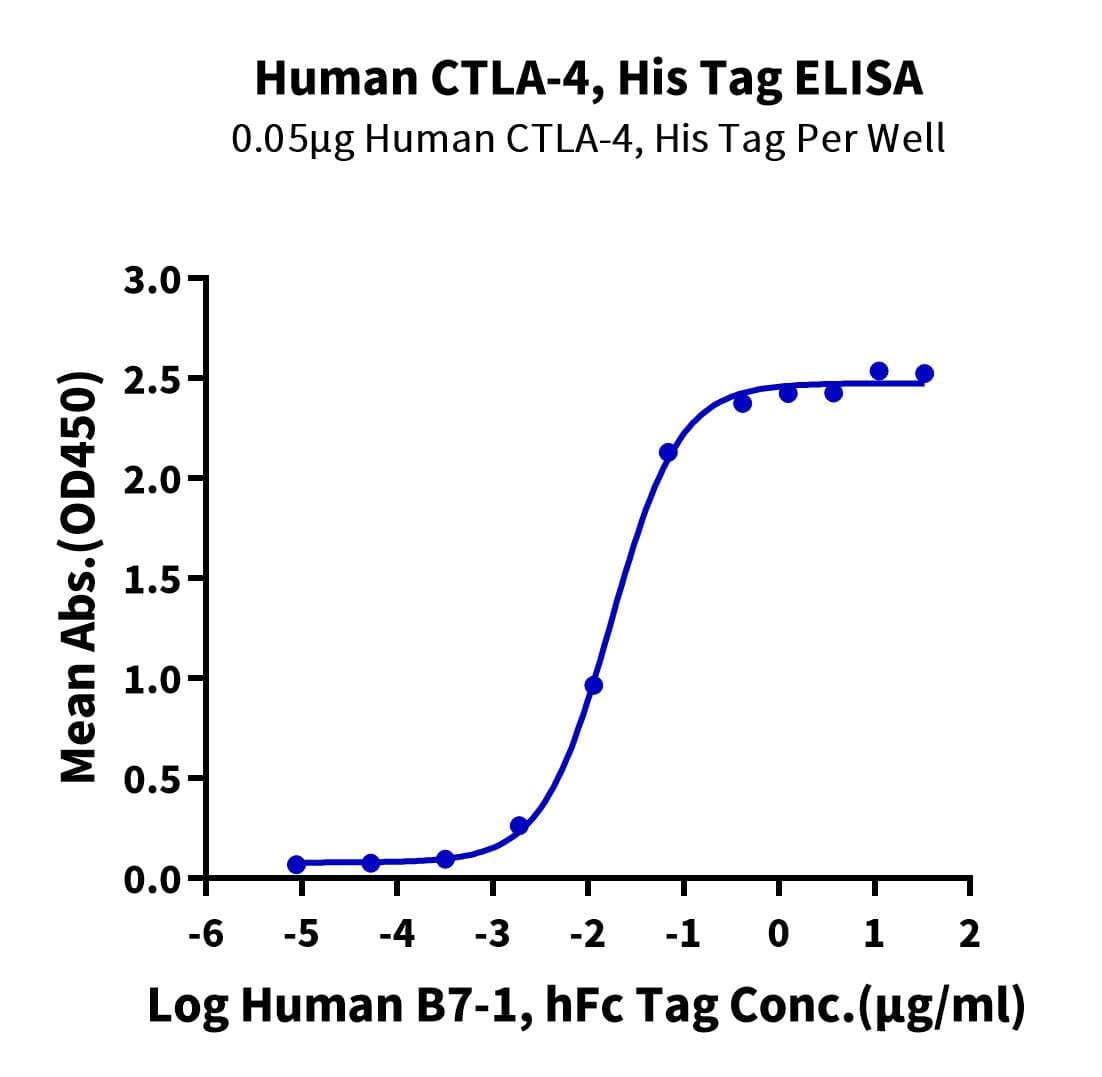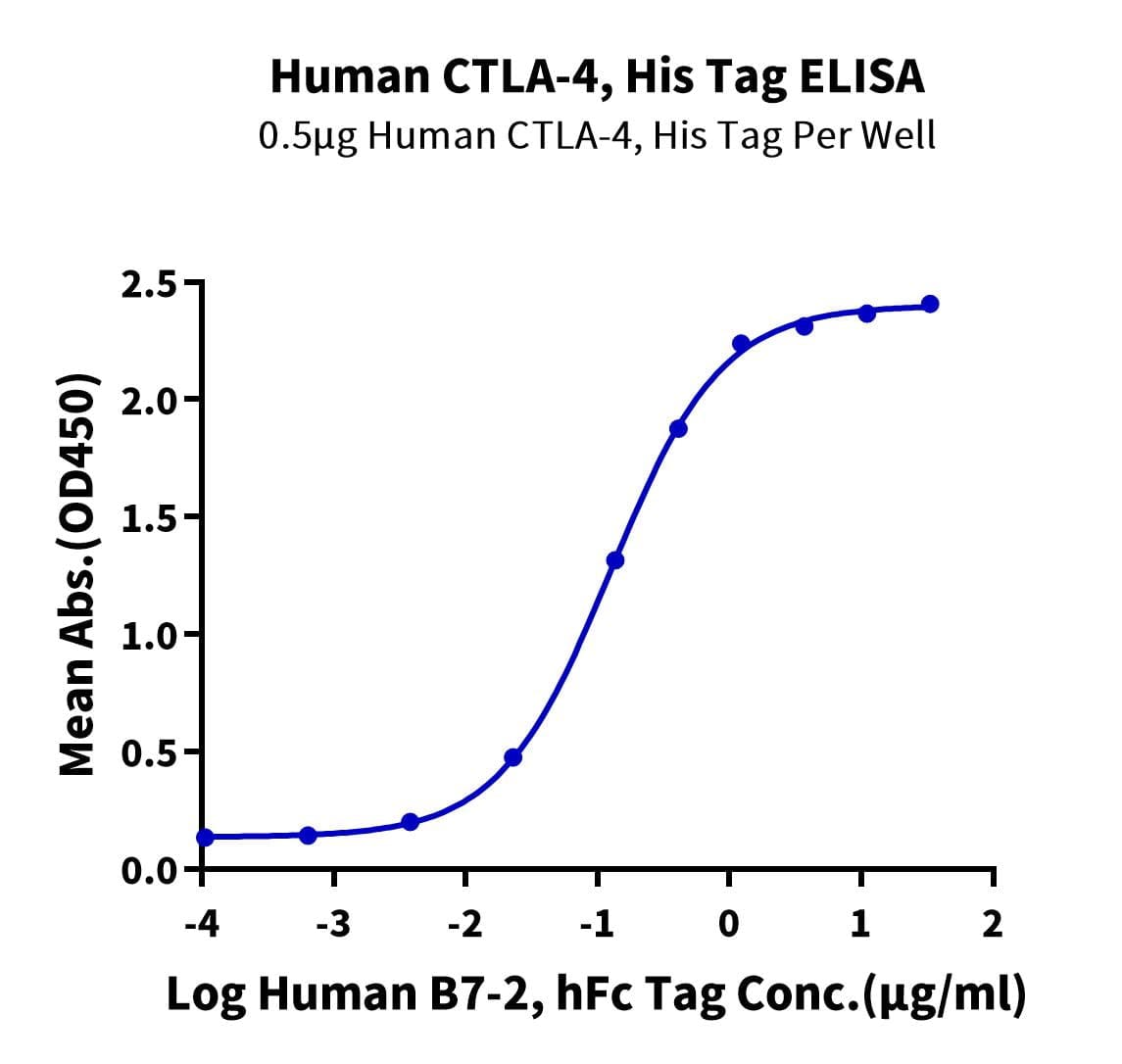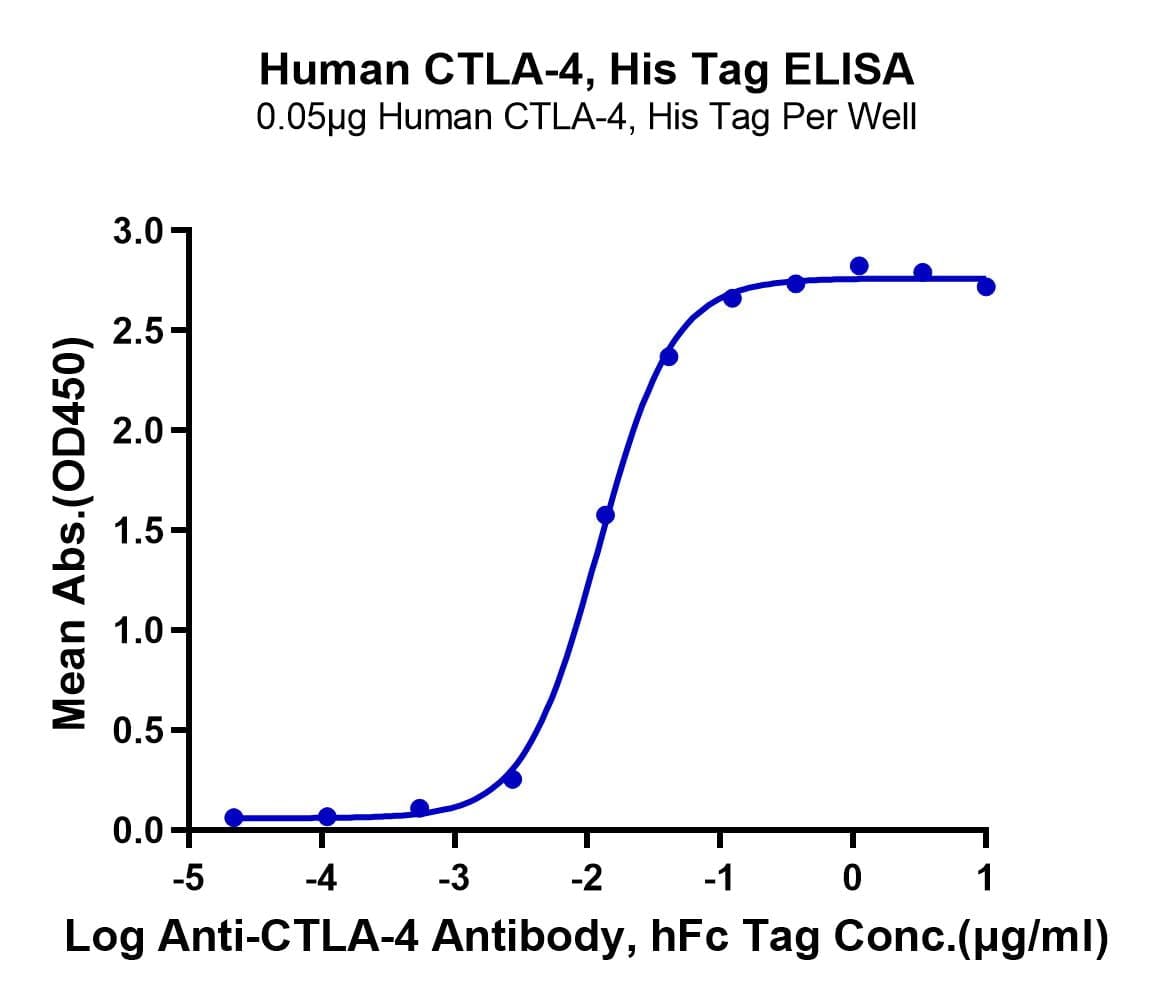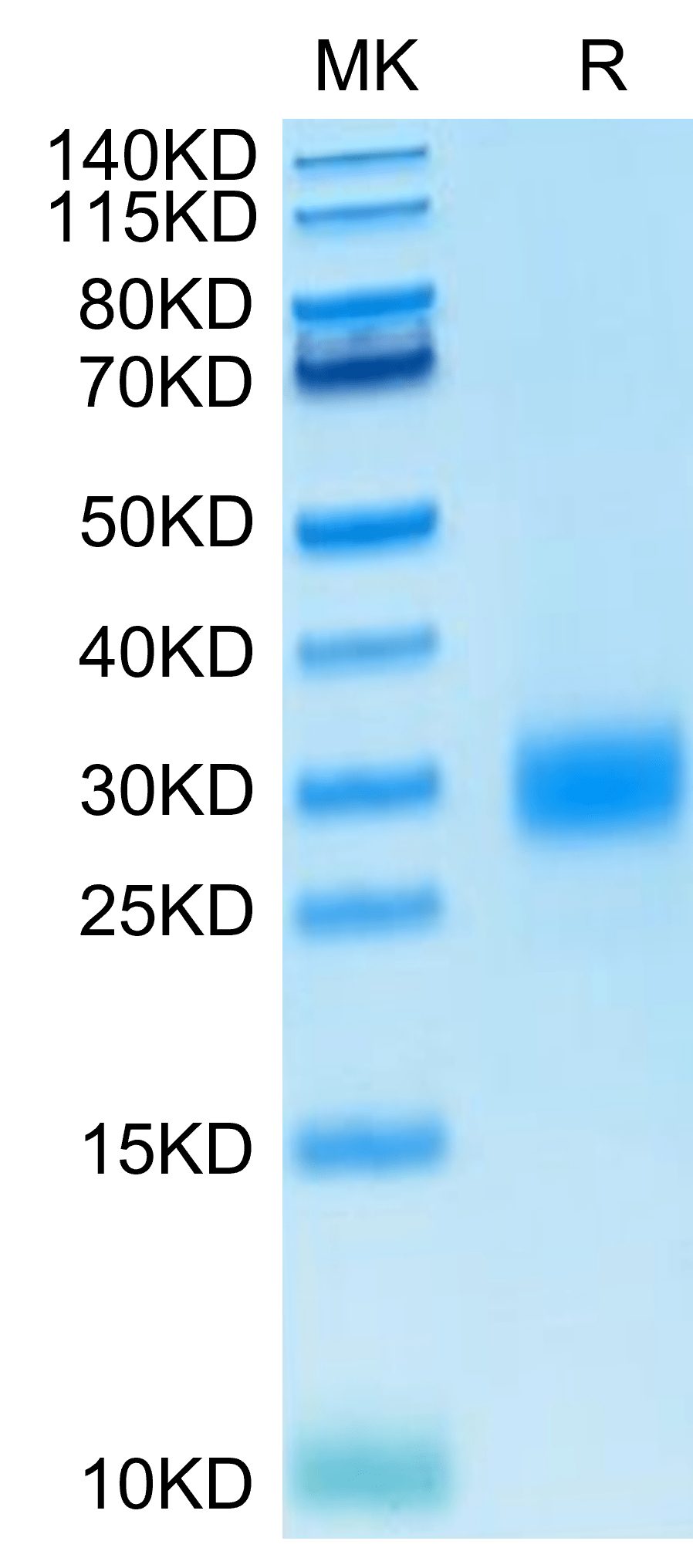| Weight | 1 lbs |
|---|---|
| Dimensions | 9 × 5 × 2 in |
| accession | P16410 |
| express system | HEK293 |
| product tag | C-His |
| purity | > 95% as determined by Tris-Bis PAGE;> 95% as determined by HPLC |
| background | CTLA-4 (cytotoxic T-lymphocyte-associated protein 4), also known as CD152, is a protein receptor that, functioning as an immune checkpoint, downregulates immune responses.CTLA4 is constitutively expressed in regulatory T cells but only upregulated in conventional T cells after activation – a phenomenon which is particularly notable in cancers. It acts as an "off" switch when bound to CD80 or CD86 on the surface of antigen-presenting cells. |
| molecular weight | The protein has a predicted MW of 14.3 kDa. Due to glycosylation, the protein migrates to 28-35 kDa based on Tris-Bis PAGE result. |
| available size | 100 µg, 500 µg |
| endotoxin | Less than 1EU per μg by the LAL method. |
Human CTLA-4/CD152 Protein 4443
$113.00 – $375.00
Summary
- Expression: HEK293
- Functional: Yes (ELISA)
- Amino Acid Range: Lys36-Asp161
Human CTLA-4/CD152 Protein 4443
| protein |
|---|
| Size and concentration 100, 500µg and lyophilized |
| Form Lyophilized |
| Storage Instructions Valid for 12 months from date of receipt when stored at -80°C. Recommend to aliquot the protein into smaller quantities for optimal storage. Please minimize freeze-thaw cycles. |
| Storage buffer Shipped at ambient temperature. |
| Purity > 95% as determined by Tris-Bis PAGE |
| target relevance |
|---|
| CTLA-4 (cytotoxic T-lymphocyte-associated protein 4), also known as CD152, is a protein receptor that, functioning as an immune checkpoint, downregulates immune responses.CTLA4 is constitutively expressed in regulatory T cells but only upregulated in conventional T cells after activation – a phenomenon which is particularly notable in cancers. It acts as an "off" switch when bound to CD80 or CD86 on the surface of antigen-presenting cells. |
| Protein names Cytotoxic T-lymphocyte protein 4 (Cytotoxic T-lymphocyte-associated antigen 4) (CTLA-4) (CD antigen CD152) |
| Gene names CTLA4,CTLA4 CD152 |
| Mass 9606Da |
| Function Inhibitory receptor acting as a major negative regulator of T-cell responses. The affinity of CTLA4 for its natural B7 family ligands, CD80 and CD86, is considerably stronger than the affinity of their cognate stimulatory coreceptor CD28. |
| Subellular location Cell membrane ; Single-pass type I membrane protein. Note=Exists primarily an intracellular antigen whose surface expression is tightly regulated by restricted trafficking to the cell surface and rapid internalization. |
| Tissues Widely expressed with highest levels in lymphoid tissues. Detected in activated T-cells where expression levels are 30- to 50-fold less than CD28, the stimulatory coreceptor, on the cell surface following activation. |
| Structure Homodimer; disulfide-linked (PubMed:11279501, PubMed:11279502, PubMed:21156796, PubMed:28484017, Ref.23). Binds to CD80/B7-1 and CD86/B7.2 (PubMed:11279501, PubMed:11279502, PubMed:28484017). Interacts with ICOSLG (PubMed:28484017). |
| Post-translational modification N-glycosylation is important for dimerization.; Phosphorylation at Tyr-201 prevents binding to the AP-2 adapter complex, blocks endocytosis, and leads to retention of CTLA4 on the cell surface. |
| Target Relevance information above includes information from UniProt accession: P16410 |
| The UniProt Consortium |
Data
Publications
Publications
| pmid | title | authors | citation |
|---|---|---|---|
| We haven't added any publications to our database yet. | |||
Protocols
| relevant to this product |
|---|
Documents
| # | ||
|---|---|---|
| Please enter your product and batch number here to retrieve product datasheet, SDS, and QC information. | ||



















